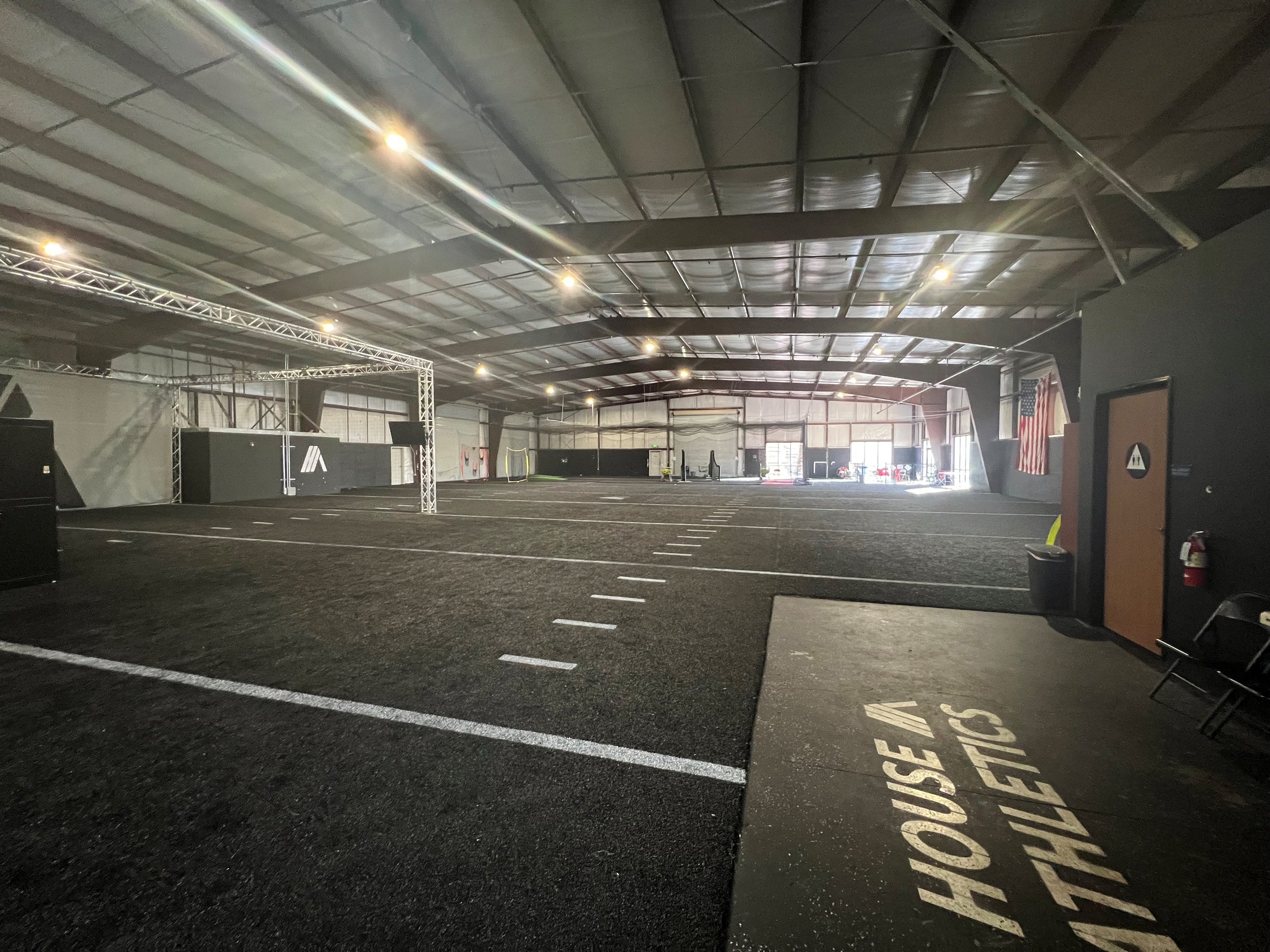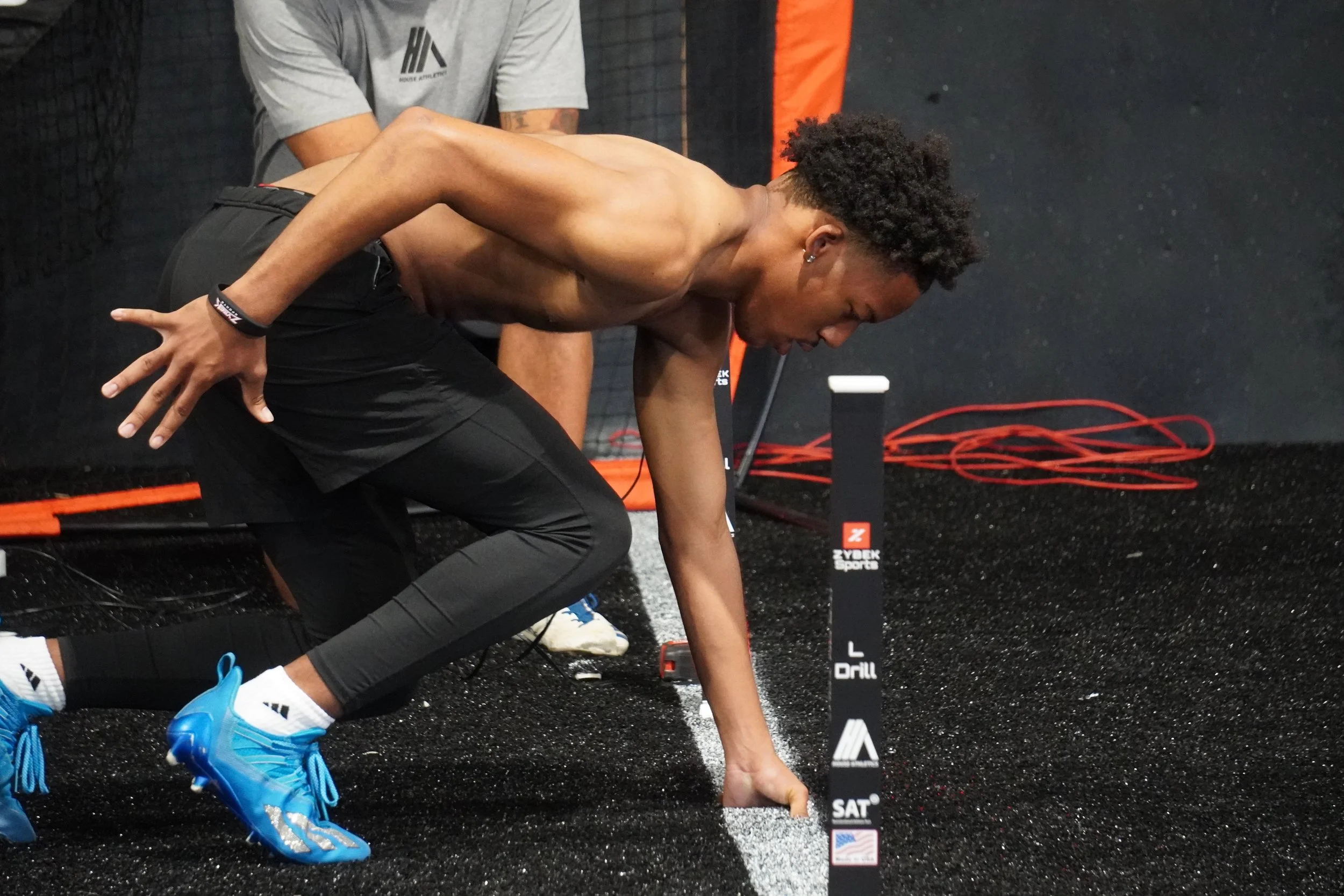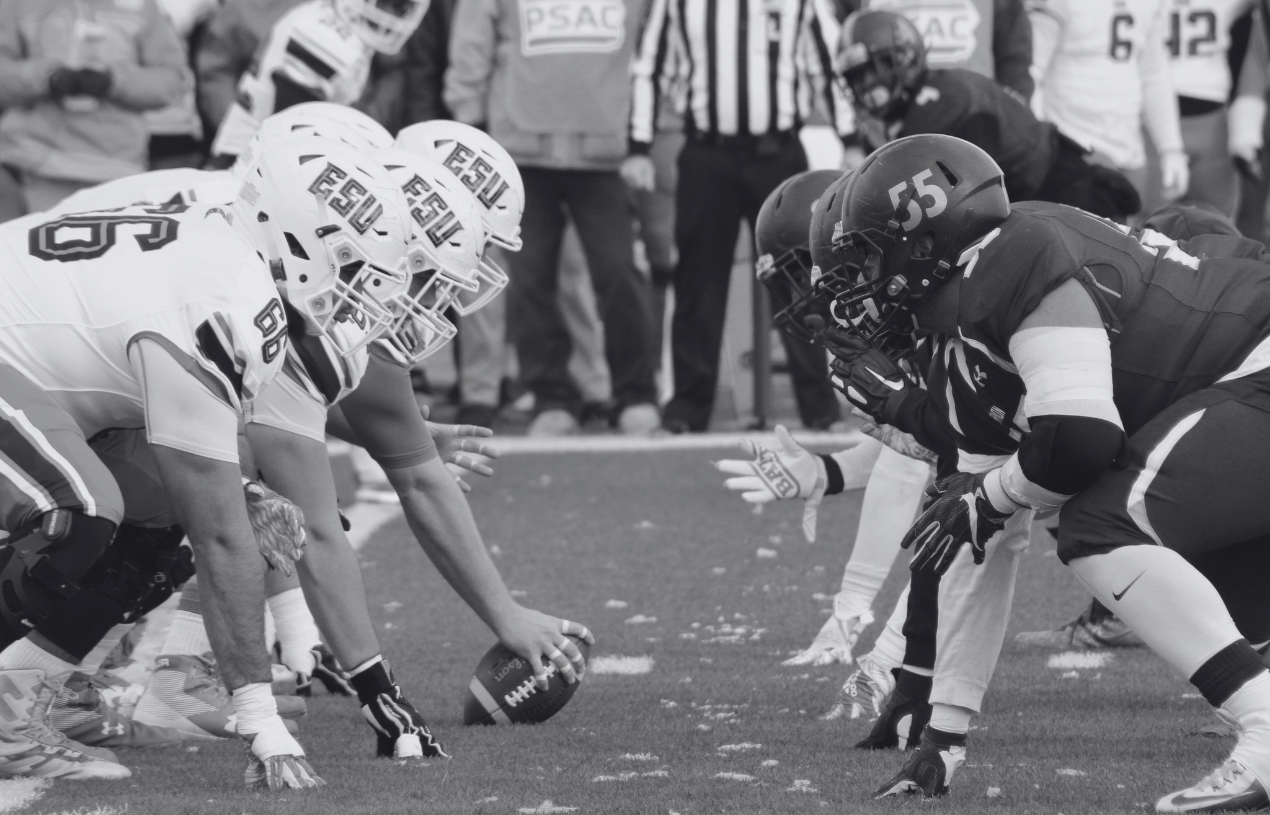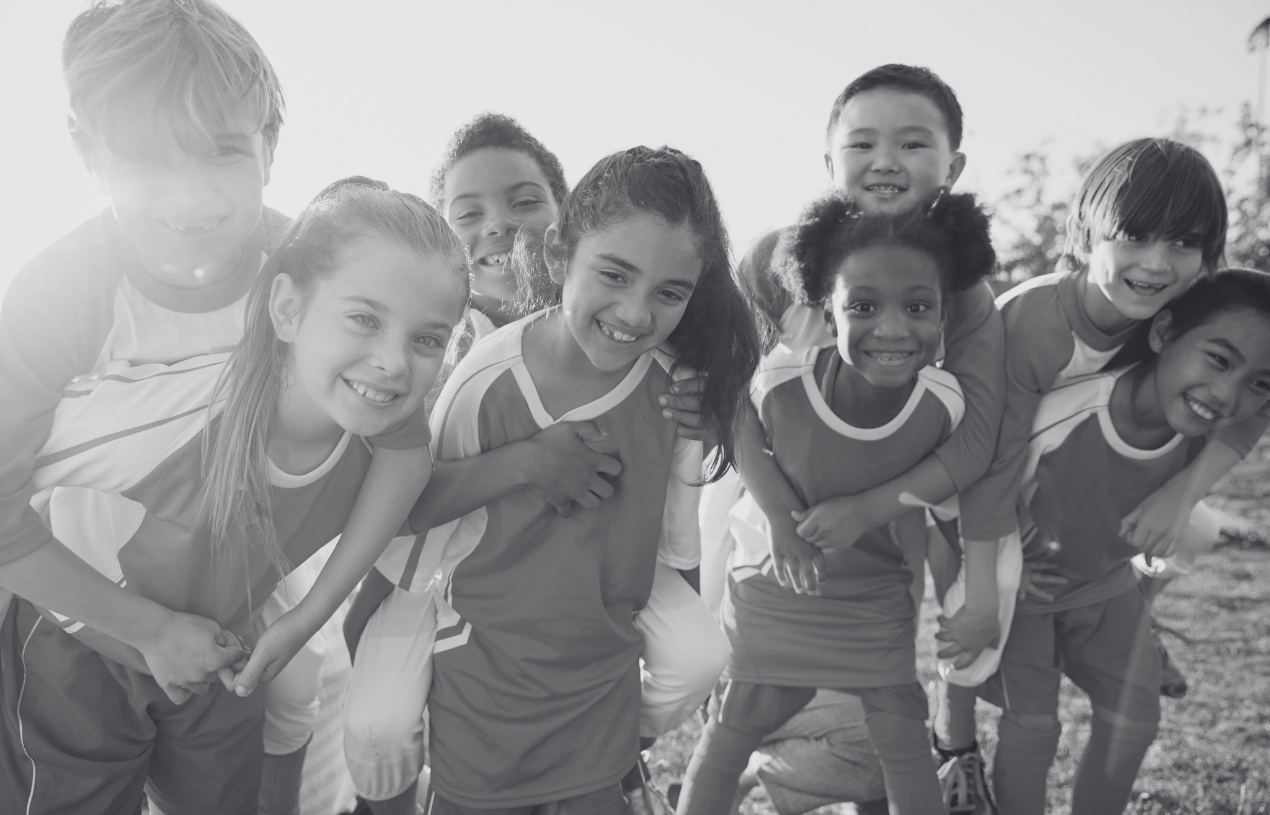
Schedule

Group FIIT
Functional Intense Interval Training
The main word here is function. Function is purpose. So functional training is just training that has a purpose. That purpose can be related to getting better at everyday activities—like walking, squatting to pick up something heavy, pushing a revolving door, or getting in and out of a chair—or preparing to compete in a sport, like soccer, football, or tennis. A functional workout is simply one that strengthens you in a particular way that directly translates to an activity outside the weight room. For most people, the practical application of functional training is to make daily activities easier to perform.
A functional workout typically consists intense non-traditional cardio, mobility movements, and compound exercises like squats, push ups, deadlifts. Compound exercises require more than one muscle group to work together, like a squat, deadlift, lunge, or push-up. Because of that, they typically mimic everyday movement patterns—like pull, push, squat, hinge, rotation. A majority of functional training movements are multijoint, and a functional training program should incorporate movements in multiple planes. That means moving forward and backward, side to side, and incorporating rotational movements with various functional equipment like TRX, BOSU ball, Kettlebells, and more.
One great major benefit to functional training is that all WOD’s (workout of the day) can be designed and formatted to any fitness level, ability, and age. Entailed with modifications and customization to an individual’s goal. This is especially good for group trainings. Still providing a 1 on 1 experience.
For the overall experience of functional training, many WOD’s will include the 10 Components of Fitness (accuracy, agility, balance, coordination, endurance, flexibility, power, speed, stamina, and strength) which covers the 2 types of training (organic and cerebral).

College Prep (15-18 Yr)
Fundamentals Training: These sessions focus on the fundamentals of what it means to be a competitive athlete both physically and mentally. Training program includes the foundations for increased speed and agility, proper body mechanics, and self-confidence building. The program also focuses on the initiation of quality self-care habits reinforcing proper rest and nutrition.

Group FIIT
Functional Intense Interval Training
The main word here is function. Function is purpose. So functional training is just training that has a purpose. That purpose can be related to getting better at everyday activities—like walking, squatting to pick up something heavy, pushing a revolving door, or getting in and out of a chair—or preparing to compete in a sport, like soccer, football, or tennis. A functional workout is simply one that strengthens you in a particular way that directly translates to an activity outside the weight room. For most people, the practical application of functional training is to make daily activities easier to perform.
A functional workout typically consists intense non-traditional cardio, mobility movements, and compound exercises like squats, push ups, deadlifts. Compound exercises require more than one muscle group to work together, like a squat, deadlift, lunge, or push-up. Because of that, they typically mimic everyday movement patterns—like pull, push, squat, hinge, rotation. A majority of functional training movements are multijoint, and a functional training program should incorporate movements in multiple planes. That means moving forward and backward, side to side, and incorporating rotational movements with various functional equipment like TRX, BOSU ball, Kettlebells, and more.
One great major benefit to functional training is that all WOD’s (workout of the day) can be designed and formatted to any fitness level, ability, and age. Entailed with modifications and customization to an individual’s goal. This is especially good for group trainings. Still providing a 1 on 1 experience.
For the overall experience of functional training, many WOD’s will include the 10 Components of Fitness (accuracy, agility, balance, coordination, endurance, flexibility, power, speed, stamina, and strength) which covers the 2 types of training (organic and cerebral).

Football Session 1
Join our Football Summer Camp for Kids Ages 6-12!
Looking for a fun and engaging summer activity for your child? Sign them up for our Softball/Baseball Summer Camp! Our experienced coaches will help your child develop their skills and love for the game.
Our camp is open to boys and girls of all skill levels, ages 6-12. Whether you're a beginner or an experienced player, we'll help you reach your full potential on the field. We'll teach you the fundamentals of the game, including passing, catching, blocking, and tackling, and help you develop your teamwork and leadership skills. You will also have an opportunity to get into our football simulator.
When: Session 1 - June 5th - 9th Session 7 - July 17th - 21st
Session 2 - June 12th - 16th Session 8 - July 24th - 28th
Session 3 - June 19th - 23rd Session 9 - July 31st - Aug 4th
Session 4 - June 26th - 30th Session 10 - Aug 7th - 11th
Session 5 - July 3rd - 7th Session 11 – Aug 14th - 18th
Session 6 - July 10th – 14th
Where: The House Athletics
Ages: 6-12 years old
Time: 9am-2pm
Cost: 1 Day $75 per child
2 Days: $145
3 Days: $210
4 Days: $270
5 Days: $325
Purchase a credit pass and use them for any sessions.
Activities include:
- Daily skill-building drills
- Fun games and scrimmages
- Sportsmanship and teamwork exercises
- Fundamentals
- Motivation
- Organized play
- Snacks and refreshments provided
What to Bring:
- Bat and Glove
- Sack Lunch
Limited spots available! Register your child now by going to our website www.thehouseathletics.com or email us at info@thehouseathletics.com.
Don't let your child miss out on this exciting opportunity to learn and play with other kids their age. We can't wait to see you at camp!
Book full week and save!!
Softball/Baseball Session 1
Join our Softball/Baseball Summer Camp for Kids Ages 6-12!
Looking for a fun and engaging summer activity for your child? Sign them up for our Softball/Baseball Summer Camp! Our experienced coaches will help your child develop their skills and love for the game.
When: Session 1 - June 5th - 9th Session 7 - July 17th - 21st
Session 2 - June 12th - 16th Session 8 - July 24th - 28th
Session 3 - June 19th - 23rd Session 9 - July 31st - Aug 4th
Session 4 - June 26th - 30th Session 10 - Aug 7th - 11th
Session 5 - July 3rd - 7th Session 11 – Aug 14th - 18th
Session 6 - July 10th – 14th
Where: The House Athletics
Ages: 6-12 years old
Time: 9am-2pm
Cost: 1 Day $75 per child
2 Days: $145
3 Days: $210
4 Days: $270
5 Days: $325
Purchase a credit pass and use them for any sessions.
Activities include:
- Daily skill-building drills
- Fun games and scrimmages
- Sportsmanship and teamwork exercises
- Fundamentals
- Motivation
- Organized play
- Snacks and refreshments provided
What to Bring:
- Bat and Glove
- Sack Lunch
Limited spots available! Register your child now by going to our website www.thehouseathletics.com or email us at info@thehouseathletics.com.
Don't let your child miss out on this exciting opportunity to learn and play with other kids their age. We can't wait to see you at camp!
Book full week and save!!

Group FIIT
Functional Intense Interval Training
The main word here is function. Function is purpose. So functional training is just training that has a purpose. That purpose can be related to getting better at everyday activities—like walking, squatting to pick up something heavy, pushing a revolving door, or getting in and out of a chair—or preparing to compete in a sport, like soccer, football, or tennis. A functional workout is simply one that strengthens you in a particular way that directly translates to an activity outside the weight room. For most people, the practical application of functional training is to make daily activities easier to perform.
A functional workout typically consists intense non-traditional cardio, mobility movements, and compound exercises like squats, push ups, deadlifts. Compound exercises require more than one muscle group to work together, like a squat, deadlift, lunge, or push-up. Because of that, they typically mimic everyday movement patterns—like pull, push, squat, hinge, rotation. A majority of functional training movements are multijoint, and a functional training program should incorporate movements in multiple planes. That means moving forward and backward, side to side, and incorporating rotational movements with various functional equipment like TRX, BOSU ball, Kettlebells, and more.
One great major benefit to functional training is that all WOD’s (workout of the day) can be designed and formatted to any fitness level, ability, and age. Entailed with modifications and customization to an individual’s goal. This is especially good for group trainings. Still providing a 1 on 1 experience.
For the overall experience of functional training, many WOD’s will include the 10 Components of Fitness (accuracy, agility, balance, coordination, endurance, flexibility, power, speed, stamina, and strength) which covers the 2 types of training (organic and cerebral).

Group FIIT Day
Functional Intense Interval Training
The main word here is function. Function is purpose. So functional training is just training that has a purpose. That purpose can be related to getting better at everyday activities—like walking, squatting to pick up something heavy, pushing a revolving door, or getting in and out of a chair—or preparing to compete in a sport, like soccer, football, or tennis. A functional workout is simply one that strengthens you in a particular way that directly translates to an activity outside the weight room. For most people, the practical application of functional training is to make daily activities easier to perform.
A functional workout typically consists intense non-traditional cardio, mobility movements, and compound exercises like squats, push ups, deadlifts. Compound exercises require more than one muscle group to work together, like a squat, deadlift, lunge, or push-up. Because of that, they typically mimic everyday movement patterns—like pull, push, squat, hinge, rotation. A majority of functional training movements are multijoint, and a functional training program should incorporate movements in multiple planes. That means moving forward and backward, side to side, and incorporating rotational movements with various functional equipment like TRX, BOSU ball, Kettlebells, and more.
One great major benefit to functional training is that all WOD’s (workout of the day) can be designed and formatted to any fitness level, ability, and age. Entailed with modifications and customization to an individual’s goal. This is especially good for group trainings. Still providing a 1 on 1 experience.
For the overall experience of functional training, many WOD’s will include the 10 Components of Fitness (accuracy, agility, balance, coordination, endurance, flexibility, power, speed, stamina, and strength) which covers the 2 types of training (organic and cerebral).

Blitz Training (12-14 Yr)
Further development of the fundamentals: These sessions are for those athletes who have mastered wildcat training and are ready to train in a more advanced program. Primary focus is for advanced speed and agility training with emphasis of proper technique and mechanics that will further enhance speed development. Other focuses include continued self-confidence building, proper weightlifting technics and further promotion of self-care habits with a more advanced nutritional component.

Wildcat Training (7-11 Yr)
Fundamentals Training: These sessions focus on the fundamentals of what it means to be a competitive athlete both physically and mentally. Training program includes the foundations for increased speed and agility, proper body mechanics, and self-confidence building. The program also focuses on the initiation of quality self-care habits reinforcing proper rest and nutrition.

College Prep (15-18 Yr)
Fundamentals Training: These sessions focus on the fundamentals of what it means to be a competitive athlete both physically and mentally. Training program includes the foundations for increased speed and agility, proper body mechanics, and self-confidence building. The program also focuses on the initiation of quality self-care habits reinforcing proper rest and nutrition.

Blitz Training (12-14 Yr)
Further development of the fundamentals: These sessions are for those athletes who have mastered wildcat training and are ready to train in a more advanced program. Primary focus is for advanced speed and agility training with emphasis of proper technique and mechanics that will further enhance speed development. Other focuses include continued self-confidence building, proper weightlifting technics and further promotion of self-care habits with a more advanced nutritional component.

Wildcat Training (7-11 Yr)
Fundamentals Training: These sessions focus on the fundamentals of what it means to be a competitive athlete both physically and mentally. Training program includes the foundations for increased speed and agility, proper body mechanics, and self-confidence building. The program also focuses on the initiation of quality self-care habits reinforcing proper rest and nutrition.

Group FIIT
Functional Intense Interval Training
The main word here is function. Function is purpose. So functional training is just training that has a purpose. That purpose can be related to getting better at everyday activities—like walking, squatting to pick up something heavy, pushing a revolving door, or getting in and out of a chair—or preparing to compete in a sport, like soccer, football, or tennis. A functional workout is simply one that strengthens you in a particular way that directly translates to an activity outside the weight room. For most people, the practical application of functional training is to make daily activities easier to perform.
A functional workout typically consists intense non-traditional cardio, mobility movements, and compound exercises like squats, push ups, deadlifts. Compound exercises require more than one muscle group to work together, like a squat, deadlift, lunge, or push-up. Because of that, they typically mimic everyday movement patterns—like pull, push, squat, hinge, rotation. A majority of functional training movements are multijoint, and a functional training program should incorporate movements in multiple planes. That means moving forward and backward, side to side, and incorporating rotational movements with various functional equipment like TRX, BOSU ball, Kettlebells, and more.
One great major benefit to functional training is that all WOD’s (workout of the day) can be designed and formatted to any fitness level, ability, and age. Entailed with modifications and customization to an individual’s goal. This is especially good for group trainings. Still providing a 1 on 1 experience.
For the overall experience of functional training, many WOD’s will include the 10 Components of Fitness (accuracy, agility, balance, coordination, endurance, flexibility, power, speed, stamina, and strength) which covers the 2 types of training (organic and cerebral).

College Prep (15-18 Yr)
Fundamentals Training: These sessions focus on the fundamentals of what it means to be a competitive athlete both physically and mentally. Training program includes the foundations for increased speed and agility, proper body mechanics, and self-confidence building. The program also focuses on the initiation of quality self-care habits reinforcing proper rest and nutrition.

Group FIIT Day
Functional Intense Interval Training
The main word here is function. Function is purpose. So functional training is just training that has a purpose. That purpose can be related to getting better at everyday activities—like walking, squatting to pick up something heavy, pushing a revolving door, or getting in and out of a chair—or preparing to compete in a sport, like soccer, football, or tennis. A functional workout is simply one that strengthens you in a particular way that directly translates to an activity outside the weight room. For most people, the practical application of functional training is to make daily activities easier to perform.
A functional workout typically consists intense non-traditional cardio, mobility movements, and compound exercises like squats, push ups, deadlifts. Compound exercises require more than one muscle group to work together, like a squat, deadlift, lunge, or push-up. Because of that, they typically mimic everyday movement patterns—like pull, push, squat, hinge, rotation. A majority of functional training movements are multijoint, and a functional training program should incorporate movements in multiple planes. That means moving forward and backward, side to side, and incorporating rotational movements with various functional equipment like TRX, BOSU ball, Kettlebells, and more.
One great major benefit to functional training is that all WOD’s (workout of the day) can be designed and formatted to any fitness level, ability, and age. Entailed with modifications and customization to an individual’s goal. This is especially good for group trainings. Still providing a 1 on 1 experience.
For the overall experience of functional training, many WOD’s will include the 10 Components of Fitness (accuracy, agility, balance, coordination, endurance, flexibility, power, speed, stamina, and strength) which covers the 2 types of training (organic and cerebral).

Blitz Training (12-14 Yr)
Further development of the fundamentals: These sessions are for those athletes who have mastered wildcat training and are ready to train in a more advanced program. Primary focus is for advanced speed and agility training with emphasis of proper technique and mechanics that will further enhance speed development. Other focuses include continued self-confidence building, proper weightlifting technics and further promotion of self-care habits with a more advanced nutritional component.

Wildcat Training (7-11 Yr)
Fundamentals Training: These sessions focus on the fundamentals of what it means to be a competitive athlete both physically and mentally. Training program includes the foundations for increased speed and agility, proper body mechanics, and self-confidence building. The program also focuses on the initiation of quality self-care habits reinforcing proper rest and nutrition.

College Prep (15-18 Yr)
Fundamentals Training: These sessions focus on the fundamentals of what it means to be a competitive athlete both physically and mentally. Training program includes the foundations for increased speed and agility, proper body mechanics, and self-confidence building. The program also focuses on the initiation of quality self-care habits reinforcing proper rest and nutrition.

Blitz Training (12-14 Yr)
Further development of the fundamentals: These sessions are for those athletes who have mastered wildcat training and are ready to train in a more advanced program. Primary focus is for advanced speed and agility training with emphasis of proper technique and mechanics that will further enhance speed development. Other focuses include continued self-confidence building, proper weightlifting technics and further promotion of self-care habits with a more advanced nutritional component.

Wildcat Training (7-11 Yr)
Fundamentals Training: These sessions focus on the fundamentals of what it means to be a competitive athlete both physically and mentally. Training program includes the foundations for increased speed and agility, proper body mechanics, and self-confidence building. The program also focuses on the initiation of quality self-care habits reinforcing proper rest and nutrition.

Group FIIT
Functional Intense Interval Training
The main word here is function. Function is purpose. So functional training is just training that has a purpose. That purpose can be related to getting better at everyday activities—like walking, squatting to pick up something heavy, pushing a revolving door, or getting in and out of a chair—or preparing to compete in a sport, like soccer, football, or tennis. A functional workout is simply one that strengthens you in a particular way that directly translates to an activity outside the weight room. For most people, the practical application of functional training is to make daily activities easier to perform.
A functional workout typically consists intense non-traditional cardio, mobility movements, and compound exercises like squats, push ups, deadlifts. Compound exercises require more than one muscle group to work together, like a squat, deadlift, lunge, or push-up. Because of that, they typically mimic everyday movement patterns—like pull, push, squat, hinge, rotation. A majority of functional training movements are multijoint, and a functional training program should incorporate movements in multiple planes. That means moving forward and backward, side to side, and incorporating rotational movements with various functional equipment like TRX, BOSU ball, Kettlebells, and more.
One great major benefit to functional training is that all WOD’s (workout of the day) can be designed and formatted to any fitness level, ability, and age. Entailed with modifications and customization to an individual’s goal. This is especially good for group trainings. Still providing a 1 on 1 experience.
For the overall experience of functional training, many WOD’s will include the 10 Components of Fitness (accuracy, agility, balance, coordination, endurance, flexibility, power, speed, stamina, and strength) which covers the 2 types of training (organic and cerebral).

College Prep (15-18 Yr)
Fundamentals Training: These sessions focus on the fundamentals of what it means to be a competitive athlete both physically and mentally. Training program includes the foundations for increased speed and agility, proper body mechanics, and self-confidence building. The program also focuses on the initiation of quality self-care habits reinforcing proper rest and nutrition.

Group FIIT Day
Functional Intense Interval Training
The main word here is function. Function is purpose. So functional training is just training that has a purpose. That purpose can be related to getting better at everyday activities—like walking, squatting to pick up something heavy, pushing a revolving door, or getting in and out of a chair—or preparing to compete in a sport, like soccer, football, or tennis. A functional workout is simply one that strengthens you in a particular way that directly translates to an activity outside the weight room. For most people, the practical application of functional training is to make daily activities easier to perform.
A functional workout typically consists intense non-traditional cardio, mobility movements, and compound exercises like squats, push ups, deadlifts. Compound exercises require more than one muscle group to work together, like a squat, deadlift, lunge, or push-up. Because of that, they typically mimic everyday movement patterns—like pull, push, squat, hinge, rotation. A majority of functional training movements are multijoint, and a functional training program should incorporate movements in multiple planes. That means moving forward and backward, side to side, and incorporating rotational movements with various functional equipment like TRX, BOSU ball, Kettlebells, and more.
One great major benefit to functional training is that all WOD’s (workout of the day) can be designed and formatted to any fitness level, ability, and age. Entailed with modifications and customization to an individual’s goal. This is especially good for group trainings. Still providing a 1 on 1 experience.
For the overall experience of functional training, many WOD’s will include the 10 Components of Fitness (accuracy, agility, balance, coordination, endurance, flexibility, power, speed, stamina, and strength) which covers the 2 types of training (organic and cerebral).
